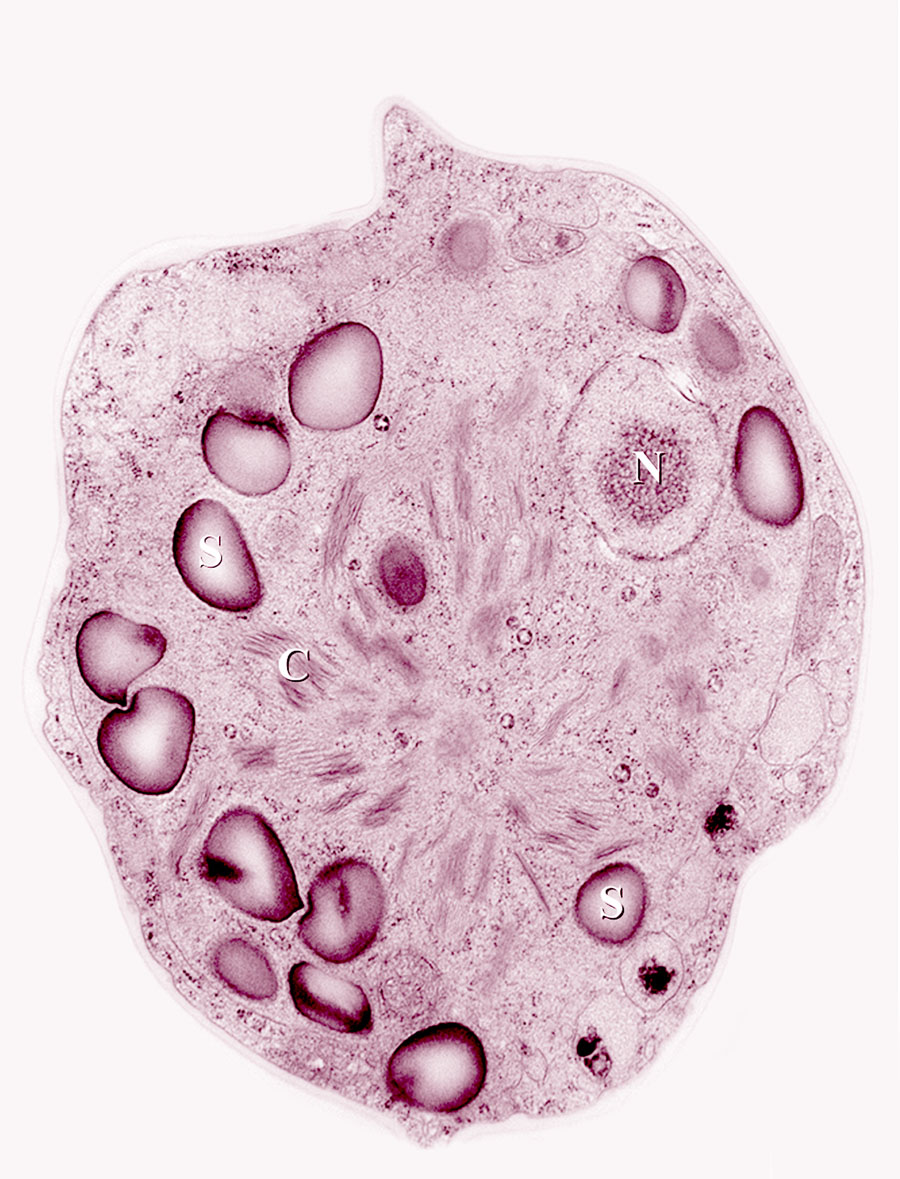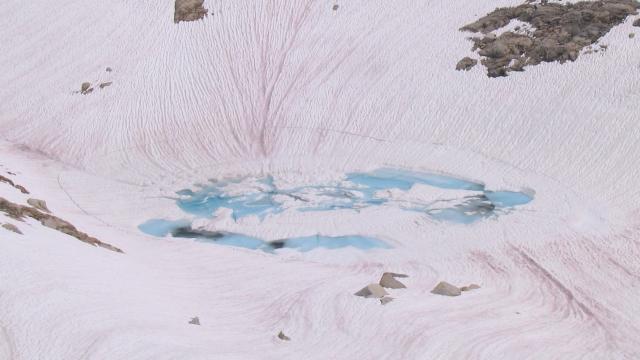Last year, a team of European researchers was alarmed to learn that glaciers covered in pink snow — caused not by an Ocean Spray truck collision, but by snow-dwelling red algae — were melting faster than the surrounding white ice. Now, another group of researchers has observed the same phenomenon halfway across the world in Alaska. Pink snow really is a problem for Earth’s glaciers, and it could get a lot worse in the future.
‘Watermelon snow’ is a common sight in Alpine glaciers in the late spring and summer. Image: Wikimedia
The issue comes down to some simple physics. Red-snow algae, which have been discovered all over the world in polar and alpine settings and get their distinctive colour from a class of pigments known as tetraterpenoids, are darker than their shiny white habitat. Pack enough of them together, and they cause snowy landscapes to absorb more of the sun’s energy and melt faster. For the algae, this seems to be a good thing: Although the microbes dwell in ice, they require liquid water, and the nutrients available within it, in order to thrive.
“This feedback hypothesis, whereby microbes increase because they produce needed meltwater, is an active research area, yet field experiments testing its assumptions are absent,” the authors of the new study write in a paper published this week in Nature Geoscience.

Chlamydomonas nivalis, a cold-loving algae responsible for turning glacial snow pink. Image: Wikimedia
The Alaska Pacific University-based researchers decided to fill that experimental gap in the most obvious way possible: by growing lots and lots of pink snow, also known as watermelon snow, or, if you’re feeling sinister, blood snow. They added water, or water containing a mix of nitrogen, phosphorus and potassium, to experimental plots in Alaska’s Harding Icefield, and compared the growth response of red-snow algae to controls plots, where nothing was added. They also tossed algae-killing bleach on few plots, just for good measure.
These experiments revealed that red-snow algae are both water and nutrient-limited, with algae abundance increasing by a factor of four when both critical ingredients were added. Importantly, more algae meant more snow melt — enriched plots were almost three times more likely than bleached plots to melt all the way to bare ice or slush over the course of the experiment.
Armed with data on the relationship between algae cover and snowmelt, the authors used Landsat-8 satellite imagery to estimated red-snow algae abundance across the entire 730 square mile (1,900 square kilometers) Harding Icefield. They found that the microbes were reddening about 270 square miles (700 square kilometers) of ice, contributing roughly 20% to the total snowmelt over that region.
“This study highlights the substantial impact of red-snow communities on glacier melt at high elevations and latitudes,” the authors write. “Because algae remain on the surface over much of the melt season and perennially resurface across melt seasons, they compound their effects over time.”
The authors warn that a combination of climate change-driven melting on polar ice sheets and increased deposition of airborne particles, including nutrient-loaded agricultural dust, could create more favourable environments for red-snow algae to proliferate in the future, triggering even more melting in a vicious feedback loop. “Climate and melt models that ignore the ecology of microbial radiative forcing,” i.e., microbe-driven melting, “risk underestimating rates of warming and consequent sea level rise.”
Of course, this is just a single study that involved an experiment on a single ice sheet, so it’s impossible to know how big of a problem red snow algae will be for glaciers on a global scale compared with all of the other processes driving increased melt. Much more research will be needed to suss that out.
But, next time you read a story about sea level rise in Miami, know that tiny red microbes half a world might be conspiring to make things a tad worse.
